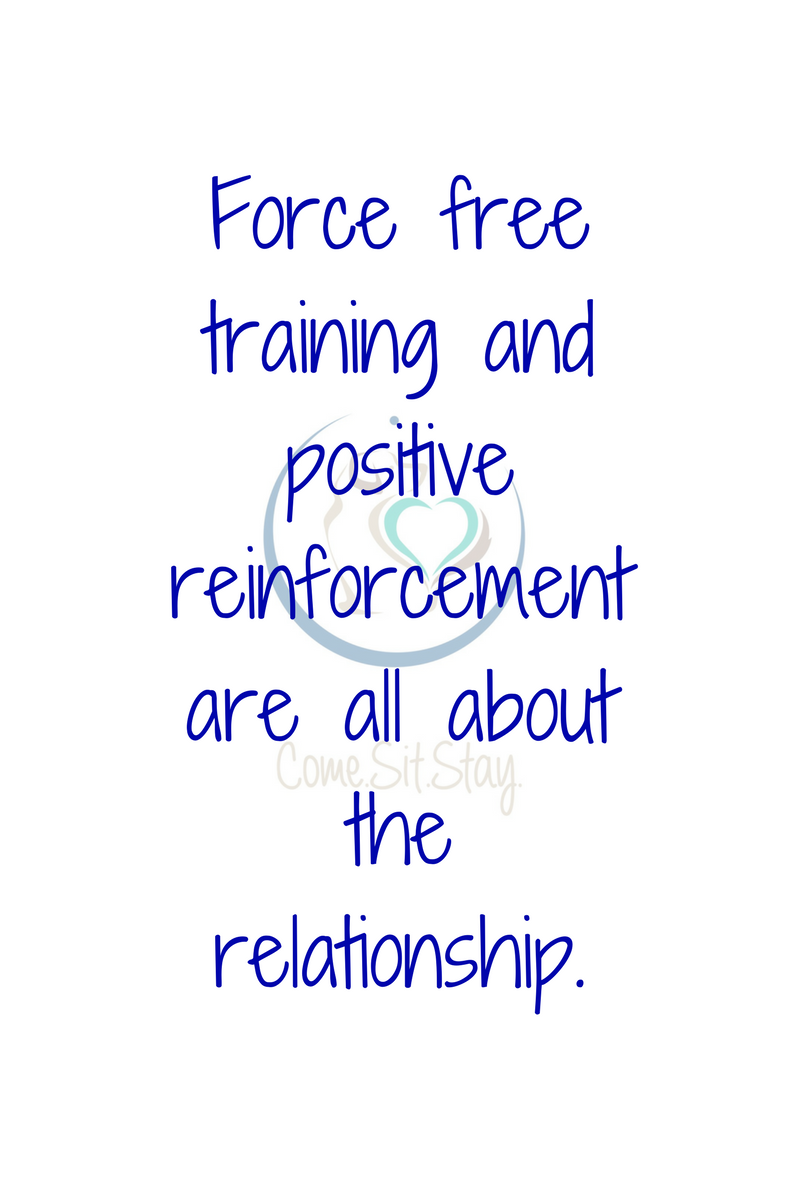I have so many clients who worry about the cue “come”. Honestly, I don’t. It is the first word in our business name, and undoubtedly one of the most important cues in a dog’s life. But we never once address this cue in our beginner class. Don’t mistake me: it is on the test. It is the FIRST thing on the test. We test for it OFF LEAD, in a store full of dogs, without ever practising (at all). Yes, I’m serious. And no, I have never had a dog fail to come when called instantly, the first time, in the test.
I’m sure I have made someone angry and probably very confused; never practice? Dogs still come? Absolutely. Force free training and positive reinforcement are all about the relationship. We spend a minimum of 20 hours in our beginner course teaching our dogs that we are the coolest, most fun, exciting, happy people to be around. Good students spend more, but I recommend a minimum of 25 minutes a day (5 minutes 5 times a day) working with your dog in all of my lessons, and during the 6 week course that adds up to 20 hours. It’s a lot of work broken down into small, very manageable segments. We make training time fun for both of you. The end result is a dog who wants to be near you.

So how do we do it? Practically speaking, all this rhetoric will do nothing for you and you’re wondering how to apply our method to your relationship. Here comes the science! The first thing we do in class is classically condition our dogs to their names. Classical conditioning occurs when a conditioned stimulus (dog’s name) is paired with an unconditioned stimulus (food). After pairing is repeated (some learning may occur after only one pairing), the organism exhibits a conditioned response (focusing on the handler) to the conditioned stimulus when the conditioned stimulus is presented alone. In this type of training it is best never to phase out a .food reward. See the post on Your Dog’s Paycheck for our opinion on rewards.
In layman’s terms, every time a dog hears his name from a handler, he gets a treat. This very quickly establishes a conditioned response wherein the dog hears his name and immediately returns his attention to his handler. Over the course of several weeks of practice, this response becomes an ingrained habit, a habit that the handler has become conditioned to reward.
The biggest mistake people make in training their dog to come is forgetting to reward the behavior. We will have another article on rewards soon, so don’t begin to worry about how fat your dog is going to be–they aren’t all food! Say you’ve called your very play driven corgi in from trying to catch the branches on the tree in the back yard. (True story: credit Tiffany Killblane and Freya. Freya likes to keep the trees trimmed in the back yard.) Freya’s mind is in play mode. Assuming you are not in a hurry, but wish to take the dogs inside, which scenario do you choose after Freya has returned to you:
A) Pet Freya and take her inside.
B) Give Freya a treat and take her inside.
C) Offer Freya a tug session and take her inside.
D) Verbally praise Freya and spend the next 5 minutes coaxing her inside because, let’s be honest, praise wasn’t remotely as interesting as that tree branch.
The best answer in this scenario is C. Freya wanted to play, and you offered her what she wanted, while simultaneously meeting your own needs. Answers A and B are also good choices, but eventually Freya (being an intelligent corgi) will learn that you aren’t going to reliably provide her favorite things and will instead ask her to do unpleasant tasks with inadequate rewards. Determine your dog’s motives and reward appropriately. Food oriented dogs like food treats, play driven dogs like play rewards, some dogs just want a belly rub. That’s another post…
So if you have a dog who consistently comes when called at home, on leash, or in his own neighborhood, but who must be chased down at the dog park, rest assured that his playmates are much more interesting than you. The simple (if time-consuming) fix is just to be more interesting. Dogs generalize everything they learn according to environment. If you have taught your dog to come in the kitchen, it is time to teach it in the rest of the house. Then you move to the yard, the street, your favorite pet friendly store, the park, and every place in between. Add distance, distraction, and duration incrementally in each location. If you know how to reward your dog appropriately, you are consistent, and you practice, your dog will come every single time, in every circumstance.
And if you need help, there’s always class. 😉
